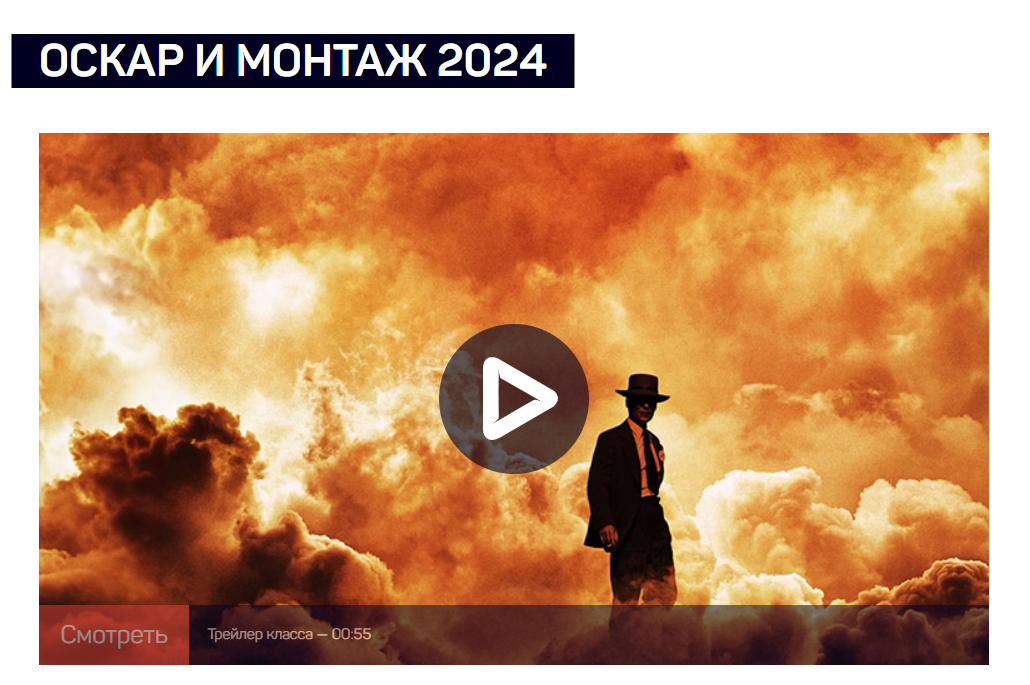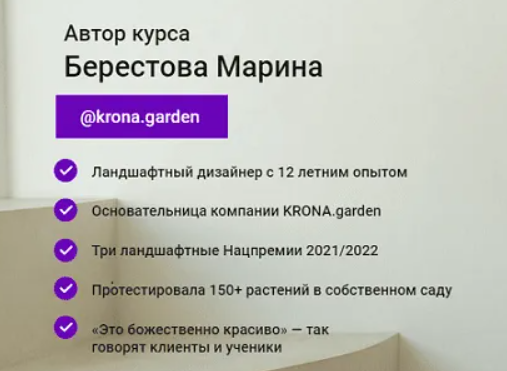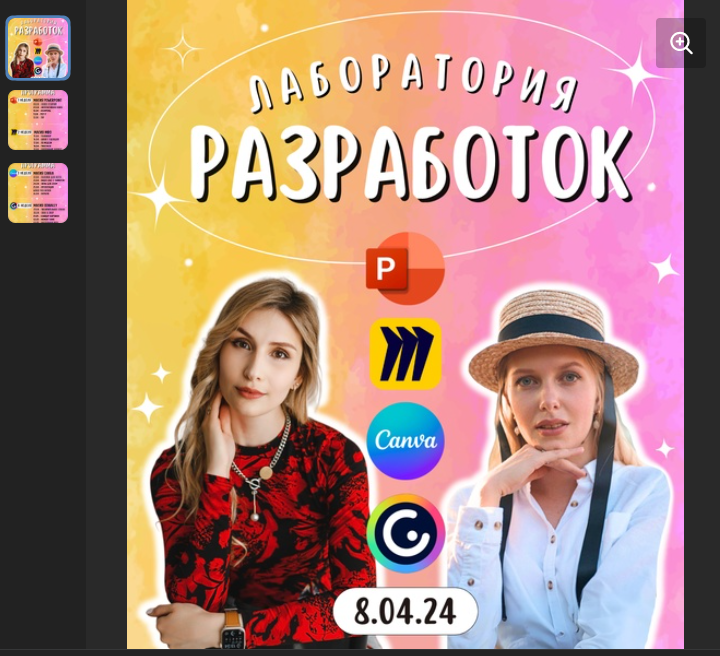Приложение
Как установить приложение на iOS
Смотрите видео ниже, чтобы узнать, как установить наш сайт в качестве веб-приложения на домашнем экране.
Примечание: This feature may not be available in some browsers.
Вы используете устаревший браузер. Этот и другие сайты могут отображаться в нём некорректно.
Вам необходимо обновить браузер или попробовать использовать другой.
Вам необходимо обновить браузер или попробовать использовать другой.
Программирование [symfonycasts] Upgrading & What's in Symfony 7 (2024)
- Пользователь tttx
- Дата Программирование

ОПИСАНИЕ:
Symfony
- Обновимся до Symfony 6.4
- Обновим все наши Flex-рецепты: расскажем о причинах изменений
- Удалим SensioFrameworkExtraBundle
- Навигация по изменениям в WebpackEncoreBundle v2 и StimulusBundle
- Поиск и устранение устареваний
- Обновление до Symfony 7
- Переход от Webpack Encore -> AssetMapper
- НОВИНКА: #[Autowire] атрибуты
- НОВИНКА: Профилировщик команд
- НОВИНКА: #[MapQueryParameter] и $request->getPayload()
- Блестящий компонент Scheduler...
Выпечка [Фермер Маркет] Видеорецепт приготовления осетинских пирогов (2023)
- Пользователь tttx
- Дата Выпечка

ОПИСАНИЕ:
Видеорецепт приготовления осетинских пирогов
ПРОДАЖНИК:
СКАЧАТЬ:
Рукоделие [mj_home.kz] Изготовление силиконовых форм своими руками (2023)
- Пользователь tttx
- Дата Рукоделие

ОПИСАНИЕ:
Создавайте несложные силиконовые формы своими руками с Нашим онлайн курсом.Превратите Ваши творческие идеи в реальность.Без лишних сложностей - только креатив и вдохновение.
Программа курса:
1. Виды силикона и чем отличается
2. Материалы которые нам необходимы для изготовления силиконовых форм в домашних условиях
3. Мастер модели, нюансы при выборе
4. Примерный расход силикона на форму
5. Подготовка мастер модели, сборка опалубки
6. Замешивание и заливка силикона
7. Извлечение формы
8. Заливка гипса в силиконовую форму
9. Как сделать опалубку для готовой силиконовой форме?
10. Список поставщиков
11. Условия хранение силиконовых...
Английский язык [My English Baby] Winter Adventures in Moscow (2024)
- Пользователь tttx
- Дата Английский язык

ОПИСАНИЕ:
Новый блок My English Baby
Школа My English Baby открывает новое направление - ПУТЕШЕСТВИЯ
Наша первая локация - ЗИМНЯЯ МОСКВА
Блок включает яркую рабочую тетрадь и незабываемые видеоролики, которые приведут ваших детей в полный восторг!
В роликах присутствуют как мультяшные, так и реальные персонажи.
ПРОДАЖНИК:
СКАЧАТЬ:
Сад и огород [Московская академия сельского хозяйства] Садовник (2024)
- Пользователь tttx
- Дата Сад и огород

ОПИСАНИЕ:
Профессия садовника всегда востребована и позволяет получать 100 000+ рублей в месяц. Хотите узнать, подходит ли она вам?
Садовник — это специалист, который профессионально занимается посадкой растений и уходом за ними. Он может работать в парке, саду, питомнике или на частном участке. Садовник поддерживает красоту и здоровье зеленых насаждений, высаживает новые растения, обеспечивая гармонию сада на протяжении всего года.
Чем занимается садовник:
Планирование территории.Высадка и формирования деревьев и кустов, живых изгородей.
Создание цветников и декоративных композиций.
Защита зеленых насаждений от...
Разное [LiveClasses] Оскар и монтаж (2024)
- Пользователь tttx
- Дата Разное

ОПИСАНИЕ:
Оскар 2024: искусство кинематографического рассказа.
Этот класс погрузит вас в мир кинематографического мастерства, исследуя тонкости рассказывания историй через объектив камеры. Он раскрывает, как сложные эмоциональные повествования и визуальные стили влияют на восприятие зрителя. Вы изучите влияние монтажа, ритма и стиля на эмоциональный отклик, а также то, как режиссеры и монтажеры работают вместе, чтобы создать целостное кинопроизведение. Мы разберем нюансы монтажных решений в таких фильмах, как «Оппенгеймер» и «Анатомия падения», подчеркивая роль монтажа в создании динамичного и завораживающего нарратива. Вы изучите, как различные...
Разное [LiveClasses] История спорта - необычный взгляд (2024)
- Пользователь tttx
- Дата Разное

ОПИСАНИЕ:
Спорт сквозь время: от древних мифов до шоу-бизнеса.
Этот чкласс расскажет увлекательную историю спорта, начиная с его корней в древности и заканчивая современным периодом, где спорт стал частью шоу-бизнеса. Погрузитесь в прошлое и узнайте, как спорт принял массовый характер в 19 веке, становясь не только формой физической активности, но и модой, отражающей социальные изменения. Мы исследуем трансформацию спорта во времена Советского Союза, где он служил идеологическим целям, переход к полупрофессионализму и зарождение спорта как шоу-бизнеса в последние десятилетия. В мастер-классе также осветим, как спортивные события, включая...
Дизайн [Марина Берестова] Сборник курсов по Ландшафтному дизайну. Пакет «Профи» (2023)
- Пользователь tttx
- Дата Графика и дизайн

ОПИСАНИЕ:
1) Ландшафтный проект на миллион
КАК ДЕЛАТЬ ЛАНДШАФТНЫЕ ПРОЕКТЫ КАЧЕСТВЕННО И ПРОДАВАТЬ ИХ ДОРОГО
- Научитесь проектировать архитектурную часть проекта, которая влюбляет с первого взгляда.
- Научитесь проектировать инженерную часть проекта - от вертикальной планировки до плана бетонных работ и малых форм.
- Получите нашу библиотеку конструктивных узлов, которые мы разрабатывали все 11 лет и сейчас используем в своих проектах.
- Поймете технологию как по шагам как делать каждый чертеж проекта.
- Получите образцы, стандарты и шаблоны оформления проекта, который будет понятно как построить.
- Почувствуете уверенность в своем...
Дизайн [Татьяна Обухова] Ирисы (2024)
- Пользователь tttx
- Дата Графика и дизайн

ОПИСАНИЕ:
Начало 22 марта
Ирисы. Эти цветы признаны одними из самых красивых на планете. Их больше 200 видов и каждый может по праву стать украшением сада.
В исполнении акварели они получаются особенно воздушными, нежными, с радужными переливами. И мимо такой красоты никак нельзя пройти!
Новый акварельный марафон с самыми разнообразными по форме и расцветке цветами – нежными ирисами!
Акварельные этюды с красивыми переливами цвета и тонкими акцентами на лепестках! Украсим свой дом живописными ирисами!
Ирис сибирский
Нарисуем ирис с разными оттенками фиолетового цвета.
Синий ирис (сетчатый)
Добавим живописного окружения...
Дизайн [OlaArtSchool] Раскадровка от А до Я (2024)
- Пользователь tttx
- Дата Графика и дизайн

ОПИСАНИЕ:
- Узнаете, с чего начать работу над книгой
- Получите полный список вопросов к редактору
- Определитесь, как работать с макетом книги лично вам
- Поймёте из чего складывается удачная раскадровка
- Вдохновитесь множеством примеров раскадровок и получите конкретные схемы
Раскадровка, как фундамент книги
Многообразие видов иллюстраций и элементов оформления
Макет книги. Способы работы с макетом в программах Word, Photoshop, InDesign и без программ.
Что узнать у редактора перед началом работы
Откуда взять недостающий разворот и куда спрятать лишний
Раскадровка для книжки-картинки
Раскадровка для текстовой...
Инфобизнес [Карина Исхакова] Эффект (видео формат) (2023)
- Пользователь tttx
- Дата Инфобизнес

ОПИСАНИЕ:
Как зарабатывать большие деньги, используя свою экспертность и получая удовольствие от жизни.
Лучший продукт по мышлению, заработку и работе с программами. Выжимка того, что мы прошли за 2 года в работе с людьми!
На Эффекте мы будем раскрывать сердце. Рост доходов будет просто странным подходом. Никто не виноват.
Я не буду вам подробно рассказывать, что будет внутри, сколько будет разборов и какой формат - предлагаю вам просто довериться и почувствовать. И принять решение о выходе на Эффект не из головы, а от всего сердца. Это будет первый шаг к космическим изменениям в вашей жизни.
На «Эффекте» мы выдадим всю нашу...
Бухгалтерия [Валерия Яровова] Изменения законодательства РФ в сфере бухгалтерского и налогового учета (2024)
- Пользователь tttx
- Дата Бухгалтерия

ОПИСАНИЕ:
Продолжительность
01:59:59
Категории
- Бухгалтерский учет
бухгалтеры, слушатели программ повышения квалификации и профессиональной переподготовки в области бухгалтерского и налогового учета.
Цели вебинара:
дать информацию об изменениях с 2024 года, которые нужно знать бухгалтеру.
ПРОДАЖНИК:
СКАЧАТЬ:
Разное [Архэ] Специальная теории относительности Эйнштейна (скорость света и замедление времени) (2024)
- Пользователь tttx
- Дата Разное

ОПИСАНИЕ:
С 21 февраля (по средам) в 19:00
Онлайн-курс Кирилла Половникова «Физика и космология»
Ричард Фейнман, один из самых известных физиков ХХ века, говорил: «Поэты утверждают, что наука лишает звезды красоты, для нее, мол, звезды — просто газовые шары. Ничего не «просто». Я тоже любуюсь звездами и чувствую их красоту. Но кто из нас видит больше? Обширность небес превосходит мое воображение… Затерянный в этой карусели, мой маленький глаз способен видеть свет, которому миллионы лет. Быть может, вещество моего тела извергнуто какой-нибудь забытой звездой, такой же, как вон та, чей взрыв я вижу сейчас. Таинству Вселенной не причинит ущерба...
Разное [Вера Сусликова] Психология цвета и вектора стиля в современной моде (2024)
- Пользователь tttx
- Дата Разное

ОПИСАНИЕ:
Продолжительность
01:59:59
Категории
- Дизайн/Дизайн одежды
вебинар рассчитан на профессиональную аудиторию слушателей, кто хочет стать экспертом в модной индустрии и помогать клиентам в подборе образа.
Цели вебинара:
ознакомиться с различными нюансами психологии цвета и рассмотреть, как она влияет на подбор оттенков и материалов по внешним данным.
ПРОДАЖНИК:
СКАЧАТЬ:
Разное [Алёна Коденцева, Алина Сербина] Лаборатория разработок (2024)
- Пользователь tttx
- Дата Разное

ОПИСАНИЕ:
Лаборатория Разработок откроет свои двери для тех, кто хочет научиться создавать материалы для уроков.
Мы подготовили целых 20 видео-уроков по самым востребованным платформам для преподавателей:
- PowerPoint
- Genially
- Miro
- Canva
Посмотрев наши уроки, вы сможете создавать свои настольные игры, воркбуки, фоны для Zoom, интерактивные книги и многое другое (всю программу можно посмотреть на картинках) и для тех, кто кто уже создаёт свои разработки.
Лаборатория подарит заряд креативности и множество идей даже самым профессиональным создателям материалов. Ваши разработки заиграют новыми красками и однозначно удивят учеников...
Разное [Архэ] Биология поведения. Лекция 2. Этология (2024)
- Пользователь tttx
- Дата Разное

ОПИСАНИЕ:
Лекция 2. Этология
Онлайн-курс «Биология поведения»
Поведение свойственно всем животным. Но разве есть что-то общее между вашей способностью читать этот анонс и глупыми инстинктами животных? За 6 лекций с помощью зоологии, теории эволюции и нейробиологии, мы соберем человеческое (и не только) поведение от самых простых его форм, до самых изощренных.
Лектор: Сергей Лопатин, физиолог, учитель и популяризатор биологии.
ПРОДАЖНИК:
СКАЧАТЬ:
Разное [Архэ] Общая теории относительности Эйнштейна (гравитация и искривление пространства-времени) (2024)
- Пользователь tttx
- Дата Разное

ОПИСАНИЕ:
С 21 февраля (по средам) в 19:00
Онлайн-курс Кирилла Половникова «Физика и космология»
Ричард Фейнман, один из самых известных физиков ХХ века, говорил: «Поэты утверждают, что наука лишает звезды красоты, для нее, мол, звезды — просто газовые шары. Ничего не «просто». Я тоже любуюсь звездами и чувствую их красоту. Но кто из нас видит больше? Обширность небес превосходит мое воображение… Затерянный в этой карусели, мой маленький глаз способен видеть свет, которому миллионы лет. Быть может, вещество моего тела извергнуто какой-нибудь забытой звездой, такой же, как вон та, чей взрыв я вижу сейчас. Таинству Вселенной не причинит ущерба...
Личностный рост [Александр Герасимов] Сила метафоры (2024)
- Пользователь tttx
- Дата Саморазвитие / Психология / Эзотерика

ОПИСАНИЕ:
На мастер-классе 20 марта мы вместе с Александром Герасимовым:
- будем составлять метафоры под наши собственные запросы;
- будем учиться быстро утилизировать метафоры;
- будем менять наши собственные убеждения и убеждения других прямо на глазах!
- Расширим границы собственного опыта;
- Активация эмоций необходима для возникновения значимого изменения, поэтому будем использовать метафорический язык;
- Поучаствуем в интересном, живом творческом процессе, в ходе которого 100% возникнет новое понимание нашей проблемы;
- Научимся использовать образный язык для описания сложных...
Психотерапия [Дарья Грачёва] Перенос и контрперенос как важные инструменты психоаналитической работы (2024)
- Пользователь tttx
- Дата Психотерапия

ОПИСАНИЕ:
Продолжительность
01:59:59
Категории
- Психология/Клиническая (медицинская) психология/Методология
психологи всех направлений.
Цели вебинара:
рассмотреть важные аспекты работы с переносом и контрпереносом в психоаналитической диагностике и психоанализе/ психоаналитической психотерапии.
ПРОДАЖНИК:
СКАЧАТЬ:
Здоровье / Внешний вид [Татьяна Дудина] Здоровые стопы (2024)
- Пользователь tttx
- Дата Здоровье / Внешний вид / Питание

ОПИСАНИЕ:
Этот практикум для вас, если:
Вы находитесь в группе риска
Ведете малоподвижный образ жизни, проводите много времени стоя на ногах, часто сталкиваетесь с мозолями, имеете избыточный вес, носите неудобную обувь (каблуки, узкая обувь, обувь на негнущейся подошве и т.д.)
Вы уже столкнулись неприятными последствиями
Часто испытываете дискомфорт во время ходьбы, отеки и тяжесть в ногах, боли в лодыжках, коленях или пояснице, деформация и возрастные изменения стоп
Хотите поработать со стопами для профилактики
Вы понимаете всю важность работы со стопами и хотите иметь базовый набор техник и упражнений для поддержания здоровья и...
Здоровье / Внешний вид [Татьяна Дудина] Здоровые тазобедренные суставы (2024)
- Пользователь tttx
- Дата Здоровье / Внешний вид / Питание

ОПИСАНИЕ:
Этот практикум для вас, если:
Вы испытываете боли в районе ТБС и поясницы
Вы периодически чувствуете дискомфорт или боли в бедрах или пояснице, связанные с коксартрозом 1 или 2 степени, напряжением мышц таза и бедер.
Вы находитесь в группе риска
Ведете малоподвижный образ жизни, много сидите в течение рабочего дня, имеете избыточный вес, ваш возраст 50+.
Хотите сохранить суставы здоровыми
Вы хотите внести в свою жизнь больше движения и сделать ТБС более функциональными и подвижными, а также предотвратить разрушение суставов.
Практикум - это 1,5 часовой урок, на котором мы:
- Сначала проведем подготовку к основной...
Здоровье / Внешний вид [Архэ] Врачи были в шоке. Еще по одной! О пользе и вреде алкоголя. Лекция 4 (2024)
- Пользователь tttx
- Дата Здоровье / Внешний вид / Питание

ОПИСАНИЕ:
Лекция 4. Еще по одной! О пользе и вреде алкоголя.
Онлайн-курс лекций по доказательной медицине «Врачи были в шоке…» — совместный проект с Clinic Chaika Tbilisi
Какие лекарства работают, а что такое фуфломицины? Почему все вокруг говорят о гормонах и БАД-ах? Как алкоголь влияет на печень и на вас (разговор, в котором точно будет фигурировать саперави)? Что такое психосоматика и почему ипохондрия — это поправимо? В этом курсе лекций вместе с докторами Clinic Chaika Tbilisi мы рассмотрим вопросы, волнующие каждого из нас. Цель лекций: внести ясность, а значит, и уменьшить уровень тревоги в понимании вашего здоровья и организма как...
Здоровье / Внешний вид [FitSpoКлуб] Пилатес со звуками для снятия спазма с диафрагмы (2024)
- Пользователь tttx
- Дата Здоровье / Внешний вид / Питание

ОПИСАНИЕ:
Необычная тренировка для улучшения дыхательного паттерна.
Произносимые гласные звуки подключают к работе голосовые связки и через вибрацию усиливают эффект расслабления дыхательной диафрагмы.
Урок поможет успокоиться, наладит сон, укрепит иммунитет, стимулирует лимфоток.
Противопоказания
Пожалуйста, перед покупкой ознакомьтесь с общими противопоказаниями. Если у вас возникают сомнения или вопросы, уточните у своего лечащего врача, разрешен ли вам такой тип фитнес-нагрузок.
Общие противопоказания:
- Беременность
- Переломы таза, позвоночника и бедренных костей
- Кровоточащий геморрой и выпадение геморроидальных узлов...
Здоровье / Внешний вид [FitSpoКлуб] Дыхательная практика-исследование для расслабления диафрагмы (2024)
- Пользователь tttx
- Дата Здоровье / Внешний вид / Питание

ОПИСАНИЕ:
Комплекс поможет вам осознать процесс дыхания и понять, как оно должно совершаться в норме.
Вы получите техники для расслабления диафрагмы, что поможет вам улучшить дыхательный паттерн, сбалансировать нервную систему, убрать отеки и сделать живот подтянутым.
Противопоказания
Пожалуйста, перед покупкой ознакомьтесь с общими противопоказаниями. Если у вас возникают сомнения или вопросы, уточните у своего лечащего врача, разрешен ли вам такой тип фитнес-нагрузок.
Общие противопоказания:
- Беременность
- Переломы таза, позвоночника и бедренных костей
- Кровоточащий геморрой и выпадение геморроидальных узлов
- Опущение...
Здоровье / Внешний вид [Татьяна Дудина] Грудной отдел и осанка (2024)
- Пользователь tttx
- Дата Здоровье / Внешний вид / Питание

ОПИСАНИЕ:
Базовые техники для восстановления подвижности грудного отдела
Этот практикум для вас, если:
- Вы испытываете боли в пояснице и шее
- Вы находитесь в группе риска
- Хотите улучшить осанку и предотвратить проблемы со спиной
Практикум - это часовой урок, который фокусируется на тренировке и улучшении состояния грудного...
Зеркала проекта
Зеркала PirateHUB на случай блокировки основного адреса. Эти ссылки безопасны для использования. Также всегда актуальная ссылка доступна на этом сайте.
Рабочее s1 piratehubРабочее s2 piratehub
Рабочее s3 piratehub
Рабочее s4 piratehub
Недоступно в РФ openssource
Пользователи онлайн
- ALIHANI
- KaTanaGTX
- lcemanXZZXZ
- Censored74
- FunkyErnie
- emmik2015
- threedollarbillyall
- Саламандра
- Smash
- uluzik
- Октябрь
- becodesign
- NastiyKsks989ks
- Ирунаромашка
- binka2016
- Markussss
- Bukasch
- Marinsm23
- Andrew_1998
- Fywychy80
- ggjtgctzpg
- Dr.mar-gold
- Coolops
- Moreasd
- den1228
- DeDokx
- ninon2020
- alexmorozov1
- deadlypower
- Vovka
- Aleks1989
- decolar
- D1SCOV3RY
- dmitry.solodkov
- mariako
- ghzdneikwg
- beerfm
- mialva
- Funnky123
- SSworker
- artacher
- rudenko29
- Alexcz
- b6spb
- alexey322
- dilyz
- Ivan638393
- Barbarash
- Vict333
- vanilka
Всего: 4,090 (пользователей: 413, гостей: 3,677)
Отзывы о курсах
-
-
KettirinkaКурс называется "Растим гения", а в начале обучения автор говорит, что взяла эту информацию из центра, где работают со сложными детьми (с отставание в развитии). Где в её курсе система - мне не очень понятно. Автор записала видео со своей дочкой, которая манерничает перед камерой, а мама на кадром умиляется. Описания упражнений не даны, а из видео с ребёнком не всегда понятны. Качество видео хорошее, есть даже какие-то раздаточные материалы. Ну, какие-то идеи можно из видео почерпнуть, если человек давно в теме. Но есть и откровенные ошибки. Поэтому курс в целом не рекомендую.
-
О нас
PirateHUB (ex. openssource) - это сообщество, объединяющее единомышленников, стремящихся к повышению своих профессиональных навыков и освоению новых областей. На нашем сайте вы можете бесплатно скачать самые актуальные и популярные курсы, книги, тренинги и вебинары, а также материалы по различным направлениям.
Пользователи онлайн
- ALIHANI
- KaTanaGTX
- lcemanXZZXZ
- Censored74
- FunkyErnie
- emmik2015
- threedollarbillyall
- Саламандра
- Smash
- uluzik
- Октябрь
- becodesign
- NastiyKsks989ks
- Ирунаромашка
- binka2016
- Markussss
- Bukasch
- Marinsm23
- Andrew_1998
- Fywychy80
- ggjtgctzpg
- Dr.mar-gold
- Coolops
- Moreasd
- den1228
- DeDokx
- ninon2020
- alexmorozov1
- deadlypower
- Vovka
- Aleks1989
- decolar
- D1SCOV3RY
- dmitry.solodkov
- mariako
- ghzdneikwg
- beerfm
- mialva
- Funnky123
- SSworker
- artacher
- rudenko29
- Alexcz
- b6spb
- alexey322
- dilyz
- Ivan638393
- Barbarash
- Vict333
- vanilka
Всего: 4,090 (пользователей: 413, гостей: 3,677)

